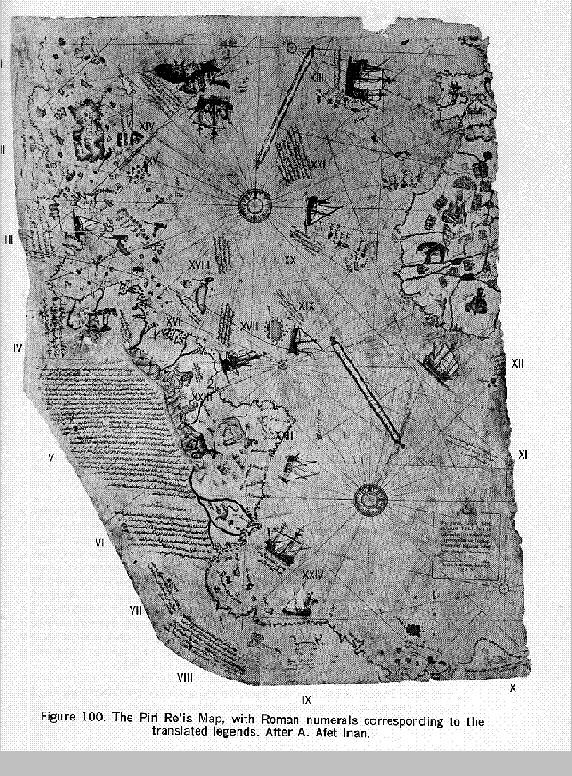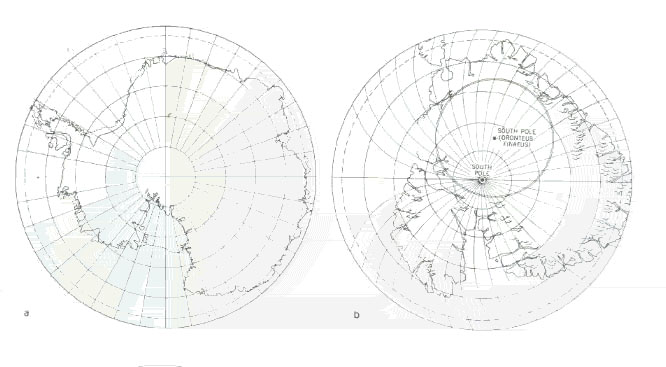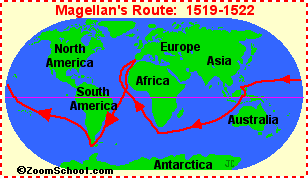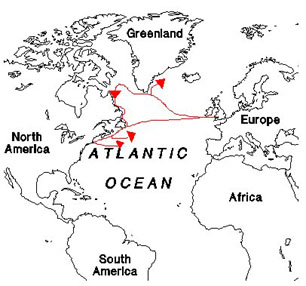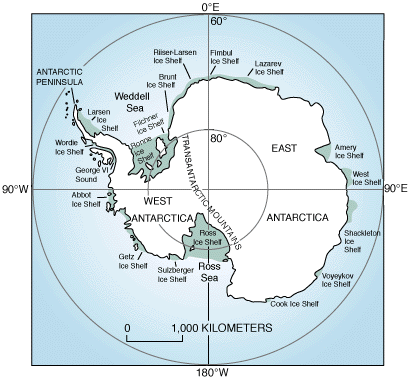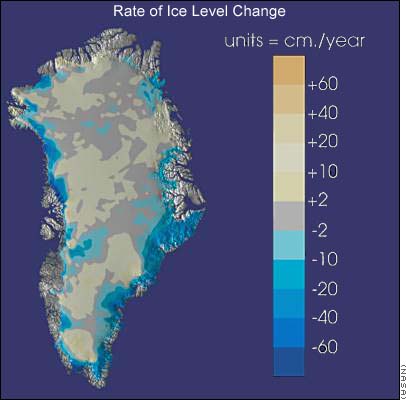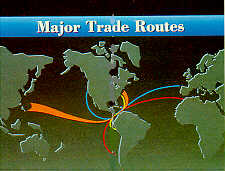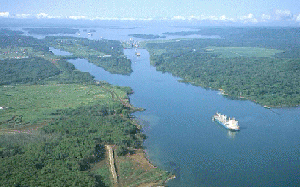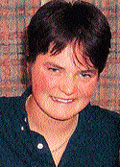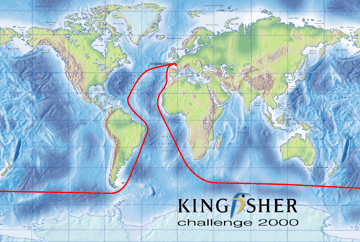THE DREAM 2-5-01 - This dream began with a computer screen of some topics which had been introduced in an earlier dream I think. I had to rearrange them in some reasonable order. Included in these were links to other pages I had already done. The dream then switched to a people dream in which I was cooking in a small kitchen, and was making dinner for the family. Somewhere during the process, Edward - my ex-husband showed up and he told us of his world travels. While he told about his world travels, there was another woman whom I don't know between him and I. He told about places I knew he had never been to ... at least in this lifetime. ( He never ventured beyond the West Coast before he met me) Neither the other woman or I was given the time to tell about our own world travels, as small as mine are. (As an aside to the dream, this will help explain it a little. I traveled outside the State of Wisconsin only 3 times before I met Edward. Twice, this distance was only about 20 miles outside the state line just so I could say I had been out of the state. I was raised by an extremely protective family and my first marriage was the same. I was protected by means of 'fear' stories by both my father and my first husband. Just to give the reader perspective on the way I was raised, I wasn't even allowed to drive a car until I was 35. I was never allowed to travel alone with friends when I was younger for fear there might be a car or bus accident. Now that I was an adult, I was terrified when I left Wisconsin that people on the West Coast were different than Wisconsin people. I watched lots of TV so that I would see people from the West Coast to see how they were before I made my final decision to go there. It was for spiritual reasons that I went since I had to leave my grown children and young grandchildren behind and they were all against my leaving to join my husband who had no choice about going. However, once I got there, I found that lots of people were from Wisconsin. My doctor came from a neighborhood only 5 blocks from where I lived in Wisconsin. My worries were for naught. Once I got out of the fear beliefs, I found that people everywhere were wonderful, caring, and loving. As it was, during our marriage we lived in 5 different states, all west of Lake Michigan. After I left my husband, I went home back to Wisconsin and he continued traveling from state to state, and lived in 4 more states in the next few years. I have since moved to California to be with my wonderful Joe. We met on the internet and fell in love very quickly and decided we should get together and do this website about dreams.) In the dream, all I could do was sit on the side quietly and hope that this unexpected visit went well. I was expecting trouble with him as his visits were always extremely stressful. At that point, Edward left the house without saying a word and a very tall man about 7 feet tall was trying to show me something on a very high shelf which was even higher, but I don't recall what that was. (Symbolically, I'm certain he was trying to make me look at a higher perspective of what was going on.) I looked at the clock and saw that it was 7 p.m. and then remembered I had to feed the people who were left in the house and as I asked the children whether they wanted Chinese or American food, which I saw was stacked in kettles on top of each other on the stove. The kettle of Chinese food was actually on top of the American stew. I started to wake up as I was pondering this. While I was waking up, a computer screen or sheet of paper appeared in a vision. It said, "With your permission, we'd like to begin a discussion of the world travels of Magellan." On this screen, an outline of a study of Magellan and all the places he traveled in the world appeared as one would make an outline of a book or long story. The outline faded quickly but I understood that I needed to know about this world traveler and what was the higher perspective of world traveling. I have no clue as to the 'we' who presented the outline to me. Thinking back to how I was raised, I marvel at the tremendous courage it must have taken to travel around the world when the journey and the outcome was completely unknown. |
||
PREVIOUS EARTHCHANGE EVIDENCE
"Piri Reis and the Hapgood Hypotheses" in "Aramco World Magazine" (Jan-Feb 1980) by Paul F. Hoye with Paul Lunde In 1929, scholars working in the archives of the Ottoman Empire in Turkey's Topkapi Palace Museum made an exciting discovery: a section of an early 16th-century Ottoman map based in part, apparently, on the original chart drawn or used by Christopher Columbus and showing his historic discoveries in the New World. The map, signed by an Ottoman captain named Piri Reis, was dated 1513, just 21 years after Columbus discovered America. This find -- disclosed two years later in Holland by German Orientalist Paul Kahle -- astonished the 18th Congress of Orientalists. For if a notation on the map were true -- "The coasts and islands on this map are taken from Columbus's map" -- the Turkish map might finally settle a centuries-old debate: did Columbus know he had found a new world? Or did he die thinking he had found a new route to China? As it turned out, the map did not settle the question. To the contrary, it has raised new and far more perplexing questions, and, in recent years, has sparked a rash of quasi-scientific and popular theories and hypotheses that attempt to answer those questions. Some of those theories, to be sure, verge on the ludicrous. But others, even when startling, have raised fascinating and sometimes disturbing possibilities. Those developments, however, came later. In 1931, historians of cartography had quite enough to do trying to cope with the immediate questions posed by the discovery in Istanbul. Was the Piri Reis map authentic? If so, how did it get into the hands of Christian Spain's feared Muslim rivals? And just who, incidentally, was this Piri Reis? According to subsequent research, the story of the Piri Reis map began in 1501, just nine years after Columbus discovered the New World, when Kemal Reis, a captain in the Ottoman fleet, captured seven ships off the coast of Spain, interrogated the crews and discovered that one man had sailed with Columbus on his great voyages of discovery. More important, in an age when maps were secret and maritime information invaluable, the sailor had in his possession a map of the New World drawn by Columbus himself. Kemal Reis seized the map, kept it and subsequently willed it to his nephew Piri Reis, also an Ottoman naval captain, and a cartographer. In 1511, the story goes on, Piri Reis began to draw a new map of the world which was to incorporate all of the recent Spanish and Portuguese discoveries. To do so, he used about 20 source maps. Among them, he wrote, were eight maps of the world done in the time of Alexander the Great (the fourth century B.C.), an Arab map of India, four Portuguese maps of the Indian Ocean and China, and his uncle Kemal's bequest, "a map drawn by Columbus in the western region." He did not, however, say what the other six source maps were. In Gallipoli, where he temporarily retired, Piri Reis reduced his source maps to a single scale -- a difficult task in those days -- and spent three years producing his map. When it was finished he added this inscription: "The author of this is the humble Piri Hajji Muhammad, known as the nephew of Kemal Reis, in the town of Gallipoli in the Holy Month of Muharram of the year 919 [A.D. 1513]." This map, presented to Sultan Selim, seems to have helped the career of Piri Reis. He was made an admiral. But it was not Piri Reis' only contribution to cartography. In 1521 he also wrote a mariner's guide to the coasts and islands of the Mediterranean -- which was to interest the cartographers trying to authenticate the map found in Istanbul. Called "Kitab-i Bahriye" ("Book of the Mariner," or "The Naval Handbook"), this book contained an account of the discovery of America by Columbus that was virtually identical to a long inscription on the left hand side of the map found in the archives of Istanbul. The map found in Istanbul, therefore, is authentic. Although research has never disclosed what the six unlisted sources were, or further identified the eight "done in the time of Alexander the Great," there is no doubt that one source was a map drawn or used by Christopher Columbus himself. There is little doubt, either, that both Piri Reis' map and book were valuable to the Ottoman Empire. Focusing, as they both did, on discoveries by Spanish and Portuguese mariners, they probably alerted the sultan to the growing threat to Ottoman power posed by European exploration of the Indian Ocean and the Arabian Gulf. Ironically, Piri Reis' book -- in which he urged Suleiman the Magnificent to drive the Portuguese out of the Red Sea and the Gulf -- also led to his death. Put in command of a fleet to drive the Portuguese out of the Gulf in 1551, he lost most of his ships and, although in his 80's, was executed. By 1929 both Piri Reis and his map had been virtually forgotten. Even then the enthusiasm aroused by the map was short. Once the initial excitement over the discovery had faded, relatively few historians of cartography, with the exception of Kahle, paid much attention to the map or tried seriously to determine exactly what it proved -- even with regard to Columbus. "Imago Mundi," for example, one of the more important journals devoted to the history of cartography, has never run a full-length article on the Piri Reis map. In 1954, however, a Harvard-trained teacher of the history of science named Charles Hapgood assigned his class at Keene State College in New Hampshire to the task of examining the Piri Reis map more closely. Starting with little knowledge of the subject -- and, says Professor Hapgood emphatically, "no preconceived notions" -- he and his students eventually spent seven years on the project. During that time, Hapgood says, "we discarded hundreds of hypotheses" before arriving at those advanced in a book called "Maps of the Ancient Sea Kings." Two years later those hypotheses became unexpectedly famous when they were incorporated in the controversial best-seller "Chariots of the Gods." Written by Erich von Daniken, "Chariots" went into at least 18 English editions and was translated into numerous other languages. Presented as fact, and written in a pseudo-scientific tone, "Chariots" described and briefly examined what the author called "the unsolved mysteries of the past." Among the "unsolved mysteries," von Daniken said, was the appearance on the Piri Reis map of information that 16th-century cartographers could not possibly have known. Citing Hapgood, von Daniken said that the map showed the coast of Antarctica, not discovered for centuries afterward, and certain mountains in Antarctica that were not discovered until modern sonar made it possible to locate them beneath the ice cap. For the author -- if not for his legions of critics -- it was obvious how Piri Reis got such information: astronauts from another planet had provided it on maps. The astronauts, he claimed, had made numerous appearances on earth before and during the period of recorded history, and left traces all over the world. Despite inaccuracies in describing what in some cases are mysteries -- and in citing Hapgood -- and despite frequently debatable logic, "Chariots" sold millions of copies. It also persuaded thousands of readers -- brought up during a period of intense public interest in "flying saucers" and "UFO's" -- that its premises were valid. "Chariots," indeed, attracted such attention that BBC Television filmed and showed a two-part refutation of the book. The BBC, moreover, was not alone; most serious observers scorned the book. Yet one of the points raised by Hapgood and quoted by von Daniken went stubbornly unanswered: how did Piri Reis know about Antarctica and its mountains in the 16th century, if, in fact, his map did show them? One answer, in science-fiction form, was put forth by author Allan W. Eckert in a ponderous 1977 novel called "The Hab Theory" in which the Ottoman admiral's map was a focal point of the plot and in which other, apparently true, phenomena were described in great detail. Among them was the undeniable fact that mammoths - - extinct for 18,000 years -- were found in Siberia embedded in the permafrost, the frozen subsoil of Arctic and Antarctic regions. According to Eckert, the mammoths were "quick-frozen" rather the way orange juice is today, thus explaining why the meat was still edible. Furthermore, some mammoths were found in an upright position with undigested grasses in their stomachs-- facts confirmed last July by a spokesman at the British Museum. The grasses, moreover, were tropical grasses. To Eckert, this suggested that Siberia was once a tropical region and that the shift in climate from tropic to arctic was very swift: in a matter of hours. This occurred, "The Hab Theory" goes on, because every 6,000 years or so the polar regions accumulate so much ice that the earth begins to wobble on its axis. At a critical point the wobble becomes so bad that the earth capsizes, leaving the polar regions at the equator and the equatorial regions at the poles. The earth's normal rotation them resumes until the new polar regions accumulate enough ice to cause another wobble and another cataclysm. This process, the book continues, explains what characters in the book call scientific mysteries. One is that the ancient Berbers, in what is now the Sahara, left cave paintings showing people swimming and sailing in "a vast body of water." This, according to "The Hab Theory," was a sea created when the earth capsized and the polar ice cap, now close to the equator, melted, creating a large sea -- now reduced to today's Lake Chad. Even for science fiction, it is a startling idea. Yet it is not entirely without a basis in fact. In the "New Scientist" issue of May 17, 1979, two professors from Cardiff and Oxford Universities in Britain were quoted as saying that the last ice age may have come quite swiftly and cited the mammoths in Siberia as proof. "Their excellent state of preservation is also evidence that they were quickly frozen after death," the article said. Science fiction, of course, is as much fiction as science. Still, at the heart of "The Hab Theory" there were some ascertainable facts. The Piri Reis map does exist, there were mammoths preserved in Siberian permafrost, and cave painting so some sort have been found in the Sahara, though whether they show "vast seas" or not could not be determined. Even more to the point, there is a real Hab theory. In fact, according to Professor Hapgood, the real Hab theory--as distinct from Eckert's science-fiction treatment -- was what launched him on his first studies of Antarctic "mysteries" and led, in a curious chain of events, to the Piri Reis map. The real Hab theory was first proposed by an engineer specializing in centrifugal force: the late Hugh Auchincloss Brown, whose initials are the same as the fictional proponent of Eckert's book. In a book called "Cataclysms of the Earth," Brown suggested what is basically the same theory presented in the novel: that massive accumulation of ice at the poles, especially the South Pole, caused the earth to wobble on its axis and then, about every 7,000 years, to "careen." Like the novel, it has some basis in fact. A spokesman at the Scott Polar Research Institute in Cambridge, England--who says "careening" is impossible -- confirmed last month that the ice does accumulate at the South Pole in massive quantities: 2,000 billion tons a year, enough to build a wall 10 inches thick and half a mile high from New York to California. For Charles Hapgood in New Hampshire, Brown's theory was fascinating. "I spent about 10 years looking into it," he said in a recent interview, "until mathematical calculations proved it impossible." But as his research had raised certain questions in his own mind, Hapgood continued to work on the subject and eventually came up with his own theory, which he outlined in "Earth's Shifting Crust" (Pantheon Books, New York, 1958). Essentially, he said, the earth's crust "slips" over its core, thus periodically changing the positions of the poles. Aware that ideas that deviate from traditional scientific beliefs get short shrift in the scientific community -- as did, for instance, Wegener's theory of continental drift, now widely accepted -- Hapgood took the precaution of submitting his manuscript to a scientist whose views were generally thought to be acceptable: Albert Einstein. Though neither cartographer nor geographer, Einstein read the manuscript, agreed to write the introduction and said Hapgood's ideas "electrified" him. He also said that if Hapgood's theory "continued to prove itself", it would be "of great importance to everything that is related to the history of the earth's surface." Meanwhile, Hapgood had heard of the Piri Reis map. A U.S. Navy cartographer, engineer and ancient-map specialist--Captain Arlington H. Mallery -- had come across a copy of the map, studied it and said publicly that the map seemed to show Antarctica -- unknown at the time the map was drawn -- and that, furthermore, the coast seemed to have been mapped at a time when it was free of ice, an apparent impossibility. Furthermore, Mallery's opinions had been endorsed by the directors of the astronomical observatories at Boston College and Georgetown University, Daniel Linehan and Francis Heyden. To Hapgood, already caught up in the subject of Antarctica, the questions raised by Mallery and the Piri Reis map were an irresistible challenge. As Antarctica was not discovered until 1820 -- 307 years after Piri Reis drew his map -- how could Piri Reis possibly have included Antarctica -- if he did? And, since Antarctica had, presumably, been covered with ice for millennia, why would he have shown it without ice? And why does the notation on the map read as follows: "There is no trace of cultivation in this country. Everything is desolate, and big snakes are said to be there. For this reason the Portuguese did not land on these shores, which are said to be very hot"? Hapgood thought that investigation of these ideas would be an interesting challenge for his students. Accordingly, he presented it to them as a class project and began to work with them himself. As the investigation began, Hapgood and his students immediately came across several puzzling facts. One was that, on the Piri Reis map, the mountains in the western region of what is obviously South America seemed to be the Andes. But since Magellan did not find a way around the continent, through the strait named after him, until 1520 -- seven years after the map was finished -- and since Pizarro did not sight the Andes until 1527 -- 14 years afterwards--how could Piri Reis have known about the Andes? The answer, obviously, was that one of Piri Reis' 20-odd source maps must have shown them. But which map? Hapgood concluded it was probably one of the eight maps of the world done in the time of Alexander the Great, or one of the six other "unknown" maps--which meant someone had not only known of the Americas, but had mapped them at least 1,700 years before Columbus. It was possible, of course, that the mountains were not -- and were not supposed to be -- the Andes at all. Still, the map did show them roughly in the right place, and included a drawing of a creature that Kahle had tentatively identified as a llama. As the llama is exclusive to the Andes and was not known in Europe in 1513, when Piri Reis finished his map, Hapgood concluded that the mountains were indeed the Andes. As the study went on, the Hapgood team noticed, toward the south, what looked very much like the Falkland Islands -- even though the Falklands were not discovered until 1592 -- and reasoned that if they were the Falklands, the land south of them would almost surely be the coast of Queen Maud Land -- Antarctica -- not discovered until more than three centuries after the Piri Reis map. As it was this feature that had fascinated Hapgood originally, his team made a particularly careful comparison of "Antarctica" on the Piri Reis map with Antarctica on a modern globe. They concluded that there was "a striking similarity" between the Piri Reis coastline and the Queen Maud Land coast. Later, after a series of complicated calculations, they also came to believe that the Piri Reis map, in that area, was accurate to within 20 miles. In what was a vital aspect of the developing hypotheses, they also concluded that Mallery's "mountains"--the mountains not discovered until this century -- were, on the Piri Reis map, the small cluster of islands shown at the bottom toward the right. According to Hapgood, the "heavy shading of some of the islands" was, in 16th-century map-making techniques, an indication of mountainous terrain. In addition, he said, a seismic profile made by a Norwegian-British-Swedish expedition in 1949 disclosed a range of undersea mountains. Some of these, the Hapgood team concluded, would emerge from the sea as islands if there were no ice cap--another indication that Antarctica had really been explored and mapped earlier, at a time when no ice cap existed. By then, of course, Hapgood and his students were captivated by the mystery of the map. They proceeded cautiously, however, because they knew that many cartographers in ancient times vaguely believed in the existence of a landmass in the southern regions and, with or without evidence, might have added something to their charts out of blind faith -- or even out of a preference for esthetic balance.
Modern Map on the Left, Oronteus Finaeus Map on the right Click here to see the various maps mentioned in this article In 1959, however, in the Library of Congress, Hapgood noticed a presumably authentic map that instantly wiped out his doubts: a map of what was almost certainly Antarctica, done in 1531 by the French cartographer Oronce Fine, also known as Oronteus Finaeus. To even the most skeptical, the Oronteus Finaeus map is startling. Although it was printed in a book in 1531 -- and was thus not subject to subsequent amendment--it is remarkably similar to today's maps of Antarctica. Admittedly it is too close to the tip of South America, and it is incorrectly oriented, yet the proportions seem similar, the coastal mountains, found in the 1957 geophysical study, are in roughly the right places and so are many bays and rivers. Furthermore, the shape of South America itself seems right, and the close resemblance between a modern, scientifically exact map of the Ross Sea and Finaeus' unnamed gulf is striking. What is different, however, is that the Oronteus Finaeus map does not seem to show the great shelves of ice that, today, surround the continent, nor the great glaciers that fringe the coastal regions. Instead there seem to be estuaries and inlets, suggesting great rivers. To Hapgood and his team, that meant that at some time in the past the Ross Sea and its coasts -- scene of the November, 1979 air disaster on Mount Erebus--and some of the hinterland of Antarctica were free of ice. It also suggested to Hapgood that since the Antarctic was certainly ice-bound in 1531 -- when Oronteus Finaeus made his map -- Finaeus must have had access to very ancient maps indeed: maps made when Antarctica was largely free of the mile=thick ice cap that buries it today, and presumably has covered it for millennia. Those observations, however, were just the beginning. "We had to have more than a resemblance," Professor Hapgood said recently. The evidence -- "the only evidence"--is in the mathematical calculations by which Hapgood and his team -- with the help of an M.I.T. mathematician -- converted the "rhumb" lines on the map into modern lines of latitude and longitude. This, briefly, involved the assumption that a system of lines of longitude and latitude underlies the network of rhumb lines which radiate from the five wind roses located in the Atlantic. These wind roses lie on the perimeter of a circle whose center would be near Cairo on the missing portion of the map. Hapgood postulated from this that the map was drawn on what is called an "equidistant projection" centered on Cairo. (The base line is located at the Giza Pyramid) This conversion required years of trial and error and eventually involved a cartographic unit of the Strategic Air Command (SAC). But the results, Hapgood says, were startling. They seemed to show an accuracy impossible at the time Piri Reis drew the map and inconceivable in the time of Alexander the Great when, presumably, Piri Reis' sources drew their maps. To Professor Hapgood the conversions of the underlying lines of latitude and longitude are vital. "They establish beyond any doubt the extraordinary accuracy of the maps, clearly beyond the capability of any medieval or ancient cartographers known to us." Hapgood and his students also examined the late medieval and early Renaissance maps called "portulans" or "portolanos." These were highly accurate mariners' charts of the Mediterranean area- -sometimes including the Black Sea--made by Portuguese, Venetian, Spanish, Catalan and Arab seamen. They are extremely beautiful maps, but what struck Hapgood was their accuracy. How, Hapgood asked, could medieval sailors, with no navigational aids but the compass have prepared such accurate charts? Hapgood was not the only one -- nor the first -- to have been puzzled by portolano maps. Years before, the Norwegian scholar Nordenskjold -- the leading authority on them -- had shown that all portolanos appear to be based on a single prototype -- that had vanished. But, says Hapgood, Nordenskjold did not check the mathematical foundation and so postulated that the lost prototype was product of classical Greece or Phoenicia, whereas Hapgood's researchers concluded that the Greek geographers, from whom Piri Reis had taken certain basic data, had to have used still other maps as sources because the data on the Greeks' maps was drawn with a precision that predated Greece's own development -- about 200 B.C.--of plane geometry and trigonometry. And without knowledge of geometry and trigonometry, they said, no one could have produced such accurate maps. The matter of accuracy, in fact, is debatable. But according to Hapgood, his examination of one portolano--the Dulcert Portolano of 1339, drawn 153 years before Columbus -- is conclusive proof that the Portolanos, at least, are "scientific products." Although this portolano covers an area measuring 3,000 miles by 1,000 miles, 50 localities in the area are pin-pointed with less than one degree of error in longitude and latitude, as reprojected by Hapgood. The researchers also examined, compared and recalculated the work of numerous geographers from Ptolemy through the Renaissance -- including the first world map made by Mercator, a seminal figure in cartography, and a remarkable map dated 1380 called the "Zeno Map." It seemed to show Greenland too without an ice cap. Thus, gradually, Hapgood, after exhaustive research and imaginative mathematical and cartographic experiments, came to his conclusions and, eventually, published them in a book called "Maps of the Ancient Sea Kings" (Chilton Books, Philadelphia, 1966). Briefly these are the conclusions:
- that the Piri Reis map, the portolano charts and many
other ancient maps include information
- that the Piri Reis map and other maps were inexplicably
accurate, particularly with regard to
- that some civilization or culture still unknown to archeology
-- and pre-dating any civilization
- that to have done this, the ancient civilization had to
have developed astronomy, navigational
- that the advanced cartographic knowledge appearing on
the Piri Reis map, the Oronteus Finaeus map These hypotheses, obviously, were revolutionary and some reviews of "Maps of the Ancient Sea Kings" were, predictably, skeptical in tone. Yet one American reviewer called it a "seminal book," an English reviewer called it "provocative" and Kenneth R. Stunkel, who challenged the conclusions in Britain's "Geographical Review," admitted that Hapgood's work on ancient maps was ". . . a model of thoroughness and meticulous engagement with a complex and elusive subject." Furthermore, Hapgood, before publishing his book, had submitted it to John K. Wright, director of the American Geographical Society for 11 years. Wright -- a geographer and cartographer -- said that Hapgood "posed hypotheses that cry aloud for further testing." Unfortunately, from Hapgood's point of view, his theories were not tested. Most scholars, in fact, seem to have ignored them. As noted, there is relatively little -- with the exception of Paul Kahle's book -- written on the Piri Reis maps by scholars. This may be because Hapgood himself, quoting Thomas Edison, had said that some problems are too difficult for specialists and must be left to amateurs -- and most scientists took him at his word. They largely ignored him. This was not entirely unexpected. As writer J. Enterline put it, in discussing the response of science to the Hapgood hypotheses, acceptance "engendered the necessity of so many accessory explanations, rationalizations and postulates that it became untenable." But their basis for rejecting it, said Enterline--who was also skeptical -- was not because of any demonstrated counter proof but because it seemed to violate common sense and probability -- which, he added, is also true of modern physics. To put it another way, Hapgood's work simply cannot be lumped with the lunatic fringe and he certainly cannot be held responsible for the "Chariots"-level offshoots that fed on his research. Although unquestionably an amateur theoretician, he did do his homework and had it thoroughly checked by professionals. The U.S. Air Force SAC cartographers, for example, worked with him for two years and fully endorsed his conclusions about Antarctica. Nonetheless, there are serious weaknesses in Hapgood's case. For one thing, Hapgood's theses depend entirely on mathematical projections and logic. While he admittedly reasons carefully from observation to conclusion--and had his calculations done by an M.I.T. mathematician -- he obviously cannot produce any of the "advanced" maps or display a single artifact from the "lost" civilization that supposedly mapped the Americas and Antarctica. For another, he may not have accorded enough importance, at least in the Caribbean portions of the Piri Reis map, to the Christopher Columbus map -- as a close examination of the Piri Reis map may show. Lastly, he was led by his own logic into postulating an ice-free Antarctic -- which conflicts totally with accepted geological theory that says the Antarctic ice cap has been in place for 50 million years. There are other arguments too. One is that many place names on the map, written in the Turco-Arabic script, are clearly transliterations of the Portuguese and Spanish. If, as the Hapgood hypotheses suggest, Piri Reis used maps drawn by ancient cartographers, why don't the place names at least reflect their language? The most compelling arguments against the Hapgood hypotheses, however, concern the Andes and--above all -- Antarctica, both vital to Hapgood's conclusions. Is the chain of mountains to the left of the map really the Andes? Is the coastline at the bottom really Antarctica? Are there any mountains shown there? And is Antarctica free of ice? A cursory examination would certainly suggest that the mountains are the Andes; they are the most striking topographical feature on the map. But beside the mountains there is an inscription that doesn't quite fit into Hapgood's scenario. It reads: "In the mountains of this territory were creatures like this, and human beings came out on the seacoast. . ." Assuming the inscription refers to the eastern coast, this means that "to come out on the seacoast," those "human beings" would have had to walk all the way from, say, Peru, rather than from one of the ranges near the Brazilian coast. And as to the llama, is it really a llama? The animal shown on the map definitely has horns and the llama definitely does not. The reference, of course, might have been to the Pacific coast. But that also poses an awkward problem--as a look at the map suggests. Hapgood assumed that the western base of the mountain chain coincided with the Pacific coast of South America. If so, Hapgood is correct that the west coast, the Pacific and the Andes must have been known before Balboa and Magellan. And thus those "human beings" could have come down from the Andes. Unfortunately the heavy black line to the south of the mountains and the reddish line at the base of the mountains probably do not indicate the west coast. For one thing, the long inscription covers terra incognita--"unknown land" -- and for another, neither the Pacific Ocean nor the Strait of Magellan are shown. Is it reasonable to suppose that the advanced mariners of ancient times could locate the Andes and miss the Pacific Ocean? A similar argument applies to the section of coast which by rights should correspond with the Isthmus of Panama, Central American, the Gulf of Mexico and Florida. Even allowing for the necessary distortions that Hapgood's "equidistant projection" would entail, this section of coast bears only the most tenuous relationship to reality -- and raises still another doubt. Would Hapgood's hypothetical, highly advanced civilization -- capable of sailing to the New World and mapping it -- have done such an incredibly bad job? The same question applies to the coast of South America where -- as Hapgood admits -- his advanced cartographers lost 900 miles of coastline. As a look at the map will show, the coast, below the Rio de la Plata, simply turns east and becomes, according to Hapgood, Antarctica. This part of the Antarctica hypothesis--the key part--is actually the weakest. First, the hypothetical cartographers left out the Strait of Magellan and Cape Horn. Next, they connected the coastline of "Antarctica" to South America and extended it eastward. There is, admittedly, a resemblance between the Piri Reis "Antarctic" coast and modern maps of the area. But the resemblance is slight. Indeed if this section of the map were to run vertically -- that is, to the south -- it would bear a much closer resemblance to the east coast of South America and could thus restore some of the missing 900 miles. This is by no means impossible: some of the more distinctive coastal features of the Piri Reis' "Antarctica" do jibe remarkably well with those on a modern map of South America. But if it were true, "Antarctica" would not be Antarctica after all; it would be South America -- which, of course, was never covered with ice -- and the animals drawn on the map would not be in an ice-free Antarctica, but in South America. Last--and a key point -- the famous "mountains" in Antarctica that so excited Mallery and Hapgood, and were presumably "clearly indicated," appear as islands, not mountains. On the other hand, some of the objections are themselves open to debate and Hapgood himself anticipated and answered many of them. To start with, Hapgood and his advocates knew full well that to suggest a "lost world," with its echoes of Sir Arthur Conan Doyle and subsequent science-fiction elaborations, might well evoke merciless public scorn from scholars and scientists--as the writings of the late Immanuel Velikovsky had in the 1950's and as "Chariots of the Gods" did in 1968. The existence of this "lost civilization," after all, could only be inferred; there were no artifacts. Hapgood, therefore, pointed out in "Maps of the Ancient Sea Kings" that civilizations have vanished before. No one knew where Sumer, Akkad, Nineveh and Babylon were until 19th-century archeologists dug them up. And as late as 1970 -- only ten years ago -- no one even suspected the existence of a civilization called Ebla. It had existed. It was real. But it vanished without a trace. Why then, argue Hapgood advocates, couldn't there have been other civilizations that vanished? The same is true of Hapgood's unspecified advanced technology. Greek fire -- something like napalm -- was developed in the ninth century but its composition has never been duplicated. Arab scientists of the Golden Age were able to perform delicate eye surgery -- using advanced instruments -- but these skills were later lost. And in 1900, according to "Scientific American," archeologists discovered an astoundingly advanced gearing system in a Greek navigational instrument. It dated back to 65 B.C. and its existence had never been suspected. Hapgood addressed more specific criticisms too. He had not overlooked the fact that on the map the Andes seemed to be in the center of South America, nor ignored the possibility that, maybe, they were mountains on the east coast drawn out of proportion, or drawn on the basis of information, rather than observation -- or even drawn in to account for the great rivers emptying into the sea. And his answer is persuasive: could Piri Reis, entirely by chance, have placed a range of enormous mountains in approximately the same place where there is a range of enormous mountains? Furthermore, there is the notation on the Piri Reis map: "The gold mines are endless." Doesn't this suggest Peru, which is rich in gold? With regard to Antarctica, there is also the inscription on "Antarctica" describing night "two hours" long -- which does suggest Antarctic latitudes. There is, moreover, the perplexing problem of the Oronteus Finaeus map. Even if Piri Reis' "Antarctica" turns out to be South America -- drawn horizontally -- or even Australia, the Finnaeus "Antarctica" is surely Antarctica and his map was also drawn in the 16th century: 1531. Where did Oronteus Finaeus get his far more detailed and accurate information? and why does Finaeus also show Antarctica without an ice cap? Furthermore, the Hapgood team identified 50 geographical points on the Finaeus map, as re-projected, whose latitudes and longitudes were located quite accurately in latitude and longitude, some of them quite close to the pole. "The mathematical probability against this being accidental," says Hapgood, "is astronomical." There are other factors too. The cartography of the Age of Discovery, for instance, often seems to have been independent of the voyages themselves; that is certain early maps of America contain features before their supposed date of discovery. The most notable example of this is the map of America made by Glareanus, a famous Swiss poet, mathematician and theoretical geographer, in the year 1510. This map, which was probably based on the 1504 de Canerio map, clearly shows the west coast of America 12 years before Magellan passed through the strait that bears his name. In other words, Piri Reis was not the only one to include anachronous information. The map of Glareanus, furthermore, was reproduced in Johannes de Stobnicza's famous 1512 Cracow edition of Ptolemy and is unquestionably similar to the map of Piri Reis. Did Piri Reis have a copy of this early printed edition of Ptolemy before him when he drew his map? Is this what Piri Reis meant by "maps drawn in the time of Alexander the Great"? Again, this is plausible, since to the Arabs -- and later the Ottomans--the second century (A.D.) geographer Ptolemy was often confused with the earlier General Ptolemy -- Alexander's general, Ptolemy I, who became king in Egypt in the fourth century B.C. and was an ancestor of Cleopatra. Still, where did de Canerio and Glareanus get their information? The subject of the Piri Reis map, obviously, is enormously complex--as well as a great deal of fun. It involves Christopher Columbus, his sources of information, his conclusions and even his motives. It involves two Ottoman naval captains and 20 unknown or vaguely identified maps. It involves the portolano charts that seem to be based on a single lost source, the Zeno map -- with an ice-free Greenland -- and the Finaeus map, possibly the most inexplicable of all. It involves, in sum, questions that are not only fascinating but, so far, unanswered--except by Charles Hapgood. The Hapgood hypotheses, therefore, cannot be just dismissed - - if only because it is indisputable that famous maps known to have existed have been lost. None of the maps from the classical world, in fact, have survived. The maps accompanying Ptolemy's great work on geography, for example, were quickly lost and the earliest maps based upon his test were drawn 1,000 years after he wrote. Marinus of Tyre, precursor of Ptolemy, is a shadowy figure whose works have perished. And the great library at Alexandria, the chief depository of classical learning, was repeatedly destroyed. It is reliably reported by an Arab author, moreover, that a globe of the world by Ptolemy -- the geographer -- existed in Cairo in the 14th century. Arabic literature contains numerous tantalizing mentions of "lost maps." The 10th century author Ibn Nadim, for example, speaks of a Persian map of the world drawn on silk in colored paints -- conceivably a copy of a classical map, but in any case lost to history. As maps by their nature are perishable -- even maps by such well-known and relatively recent cartographers as Mercator are extremely rare--is it so improbable that Hapgood's mysterious maps did exist and did vanish? Admittedly, the answer of many cartographers and historians would be, yes it is improbable. The Hapgood hypotheses, after all, challenge basic and long-standing historical and geological premises. But Hapgood, now retired and living in Florida, remains confident that his theories will be accepted eventually. "After all," he said, "they haven't even been examined yet." Hapgood, furthermore, is still working on his hypotheses. Last year he finished revisions of both books and one of them, "Sea Kings," was published by E.P. Dutton & Company, New York and by Turnstone Books, London, in October. The other will be published this year. Beyond that, however, he has no plans to fight for either attention or acceptance. "I will not wear myself out trying to persuade people with pre-fixed ideas. My books speak for themselves and someday, I think, they will be acknowledged." It is unlikely, of course, that such acknowledgement will be forthcoming soon, if ever; as the supplementary articles suggest, there could be other explanations. Furthermore, the work of an obscure 16th-century Ottoman admiral does not command a high priority on science's crowded calendars. But it is not impossible either. Increasingly, scientific writers and critics are beginning to re-examine some of the traditional premises and several, as recently as last year, have openly objected to the kind of cool dismissal that the Hapgood theories received on publication. In the magazine "New Scientist," for example, several articles in 1979 focused on what they call "deviant science" and one critic said that it is from deviant science "That seminal ideas sometimes arise, later to be accepted as scientific orthodoxy." One example is the highly controversial Velikovsky--who died just two months ago. In addition to other, admittedly fanciful theories, Velikovsky hypothesized that Venus and Mars had once disturbed the rotation of the earth on its axis; he was not only belittled but threatened. Yet, according to the "Encyclopaedia Britannica," space probes have subsequently verified some details of his theory. Verification of the Hapgood hypotheses of course, would require highly persuasive evidence. As a "New Scientist" writer quoted, "extraordinary claims demand extraordinary proof," and in the case of Professor Hapgood that means location of the "lost" civilization or at least one of the "advanced" source maps presumably use by Piri Reis. But this, says Hapgood, is not impossible. Somewhere, he thinks, those source maps exist: hidden, perhaps, amid the massive collections of documents crammed into museums and archives in Istanbul, many still unexamined. No search for the source has ever been made, Hapgood says, but when there is "the result might be a discovery of vast importance." His view, given the reception of his hypotheses, is natural. But it is by no means implausible. In 1955, a cartographer named M. Destombes announced the discovery of Ferdinand Magellan's own chart of his epochal circumnavigation of the world. No one had known it existed, but Destombes found it--in the archives of Istanbul. |
